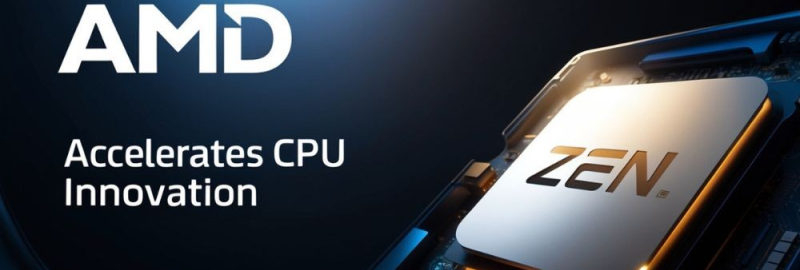
Exciting times are ahead as AMD pushes the boundaries of CPU innovation once again. The company is wasting no time in enhancing its newly released Zen 5 CPUs, also known as the Ryzen 9000 series. Initially launched with 4nm silicon, AMD is now gearing up for a swift update to 3nm technology. This rapidly advancing shift promises not only to improve power efficiency but also to elevate overall performance, showing AMD's commitment to continuous innovation and adaptability in a highly competitive market landscape.
Leading the charge is Mike Clark, AMD's seasoned chip designer with over 30 years of experience. In a conversation with Tom's Hardware, Clark discussed the complexities and advantages of utilizing both 4nm and 3nm technologies for Zen 5. He highlighted the inherent challenges of transitioning features between the differing nodes, especially considering power impacts and optimization concerns. However, Clark’s insights make it clear that AMD is tackling these hurdles head-on, signaling a swift and efficient integration of 3nm architecture into the Zen 5 lineup.
The timeline for the 3nm Zen 5 CPUs appears to be promising. According to Clark, the new 3nm chips are set to debut much sooner than anticipated, closely following their 4nm counterparts. This rapid advancement suggests that AMD is well-prepared and keen on not delaying the benefits that 3nm technology can offer. For consumers and technology enthusiasts, this is a bold move that underlines AMD’s aggressive strategy to maintain its edge in performance and efficiency in the CPU market.
The speculation surrounding the application of 3nm technology has led to considerable excitement. While there are hints that the 3nm nodes might be used primarily for Zen 5C cores, which are rumored to be tailored for compact designs, the specifics remain under wraps. This leaves room for intriguing possibilities, particularly for AMD’s APUs designed for laptops and handheld devices. The current reliance on 4nm silicon in mobile APUs has raised concerns about battery life, and a 3nm upgrade could be precisely the solution needed.
Though Clark didn't delve into explicit details about the exact utilization of 3nm in desktop or mobile applications, the anticipation is rife. Speculating about integration into servers, workstations, or embedded applications only broadens the potential impact. For desktop users, power consumption may not be a primary concern, yet the leap to 3nm could still offer benefits. Meanwhile, laptop and handheld users could experience significant gains in efficiency and battery life. As AMD forges ahead, its latest endeavors with Zen 5 CPUs underscore the relentless drive to push technological boundaries and deliver superior performance to end-users.
